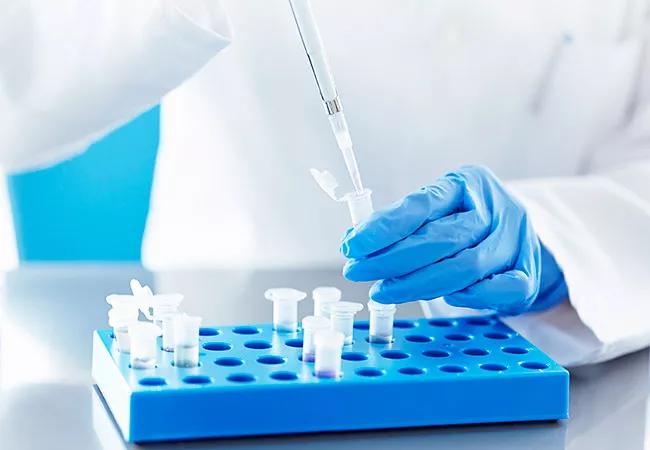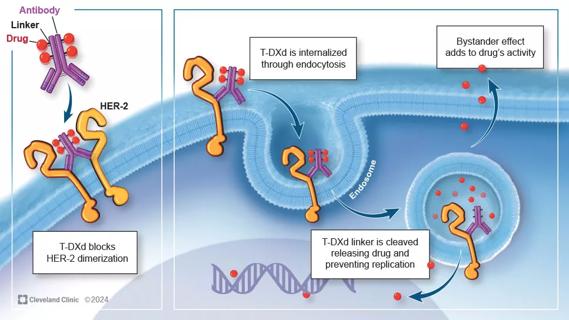Sequencing study shows significant heterogeneity among intraprostatic tumors

Bigger doesn’t always mean better—even when selecting the best prostate tumor to biopsy for prognostication and treatment planning.
Advertisement
Cleveland Clinic is a non-profit academic medical center. Advertising on our site helps support our mission. We do not endorse non-Cleveland Clinic products or services. Policy
A new study from Cleveland Clinic shows that smaller tumors and lesions elsewhere in the organ may harbor genomic variations of greater clinical significance than their larger, more established progenitor tumors.
This is critically important because providers typically sample the largest, most established tumors when preparing samples for pathology and treatment planning. Doing so can miss lethal cancers that might be lurking elsewhere in the prostate and ultimately offer a false sense of security in the potential for a cancer to progress.
The study, Intratumoral and Intertumoral Genomic Heterogeneity of Multifocal Localized Prostate Cancer Impacts Molecular Classifications and Genomic Prognosticators, appears in the journal European Urology. It is the first of its kind to evaluate fully the molecular profile of multifocal localized prostate cancer and the first to conduct comprehensive molecular analysis on intraprostatic tumors from the same patients before exposure to hormonal therapy or chemotherapy.
“We should be careful making treatment decisions based on single biopsies,” says Hannelore Heemers, PhD, Associate Staff in the Cancer Biology Department of Cleveland Clinic’s Lerner Research Institute and senior author on the study. “Prostate tumors can be very diverse and could easily be considered different cancers of the same organ, so if you sample just one tumor you might have either an over- or underestimation of overall risk.”
Especially in presurgical biopsy, standard clinical practice involves sampling of only the largest or most accessible tumor. According to study results, however, this can miss other tumors that may be more likely to progress quickly and metastasize.
Advertisement
Dr. Heemers’ team, which included colleagues from Roswell Park Cancer Institute, evaluated five molecular parameters (outlined below) from several tumors and lesions within the same prostates of four patients with localized disease who had not undergone neoadjuvant hormonal therapy or chemotherapy. In other words, these were untreated cancers that, at the time of prostatectomy, were localized to the prostate.
They sampled every nonmicroscopic, noncontiguous tumor from each prostate, resulting in 26 tumor cores, which included three cores from each of the four index tumors.
The goal of the study was to determine the impact of genomic and transcriptomic diversity within and among intraprostatic tumors’ molecular taxonomy, predictors of progression and actionable therapeutic targets.
It turns out, there are a lot of both—prognostic variations and potential therapeutic targets—and mutations can vary as much as 20 to 40 percent or more, even among different places in the same tumor.
Altogether, RNA and DNA were extracted from 26 tumor cores, which contained more than 90 percent cancerous tissue. The team analyzed the samples using whole-exome sequencing, single-nucleotide polymorphism arrays and RNA sequencing.
Study parameters include:
Results show significant heterogeneity both among and within localized prostate tumors from the same patients. Even among samples taken from the same index tumors, molecular profiling indicated varying degrees of risk, suggesting that biopsy samples could prove arbitrary based on the vagaries of which tumor a provider biopsies and where in the tumor the sample comes from.
Advertisement
After discovering the extent of variation among the four patients in the original study, Dr. Heemers’ team turned to the literature and found 84 patients whose tumors had already been analyzed for one or more of the study parameters. Review of these data confirmed the team’s findings.
Although results of this study should give pause when providers identify optimal pre-surgical biopsy location(s), a challenge will be translating this into routine practice.
Why? Because obtaining multiple biopsy cores not only adds to treatment burden for patients, it also significantly increases the amount of sample processing and pathology resources required to evaluate overall risk.
Nevertheless, Dr. Heemers says, the next steps from this study should be to evaluate larger cohorts to identify best practices based on long-term clinical outcomes and overall improvements in delivery of care and patient quality of life.
Advertisement
Advertisement

First-of-its-kind research investigates the viability of standard screening to reduce the burden of late-stage cancer diagnoses

Global R&D efforts expanding first-line and relapse therapy options for patients

Study demonstrates ability to reduce patients’ reliance on phlebotomies to stabilize hematocrit levels

A case study on the value of access to novel therapies through clinical trials

Findings highlight an association between obesity and an increased incidence of moderate-severe disease

Cleveland Clinic Cancer Institute takes multi-faceted approach to increasing clinical trial access 23456

Key learnings from DESTINY trials

Overall survival in patients treated since 2008 is nearly 20% higher than in earlier patients